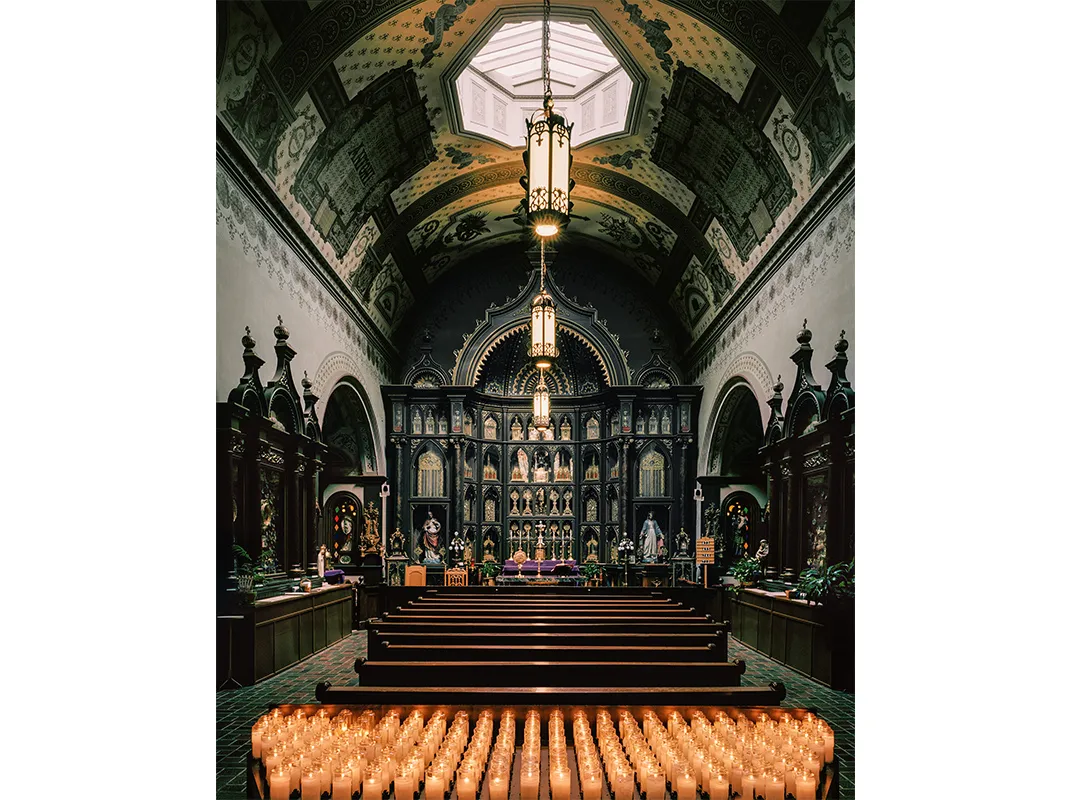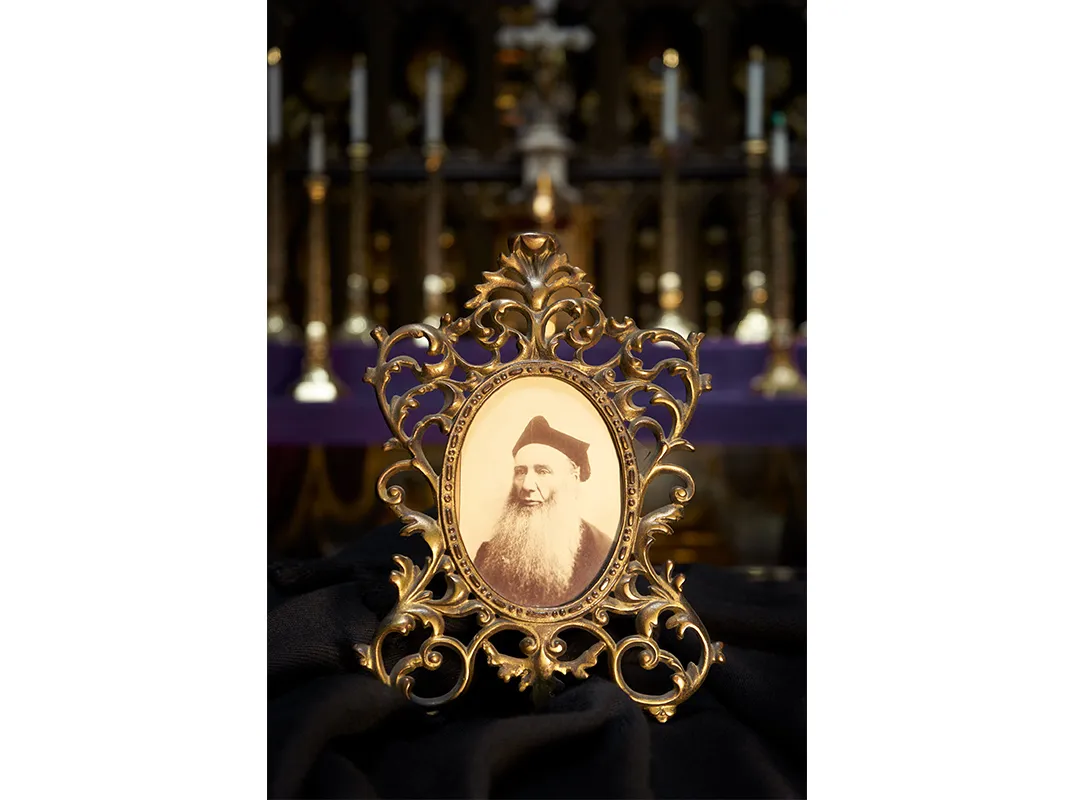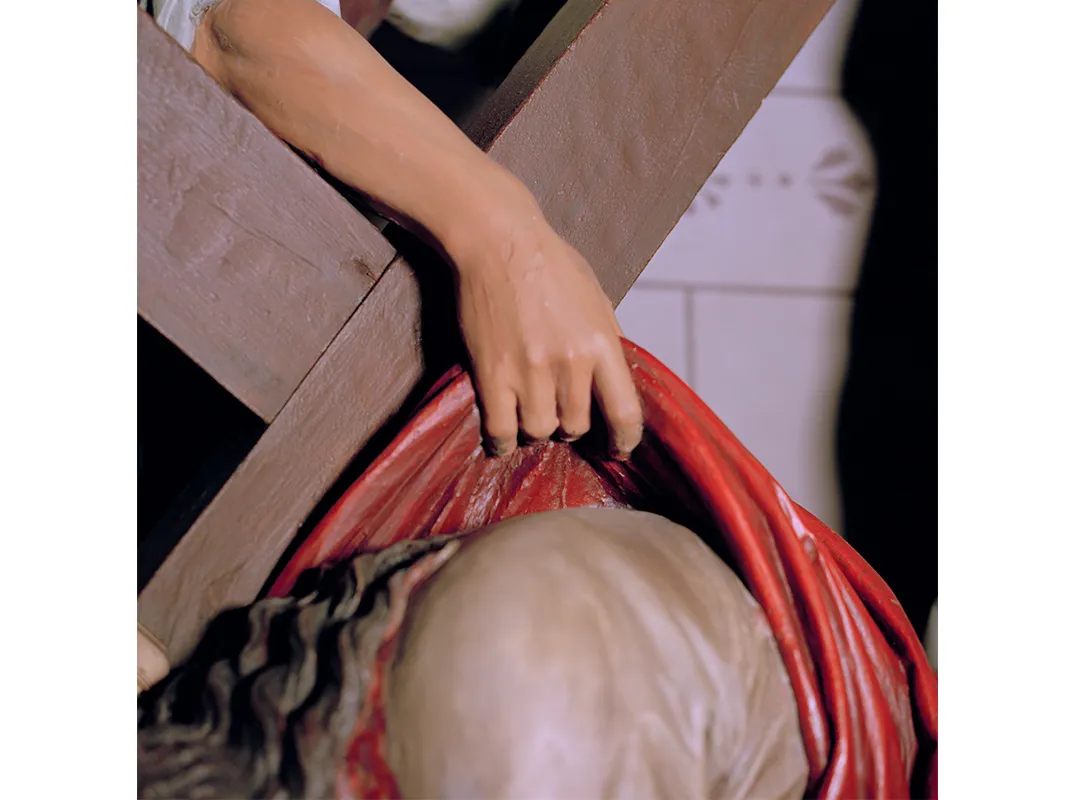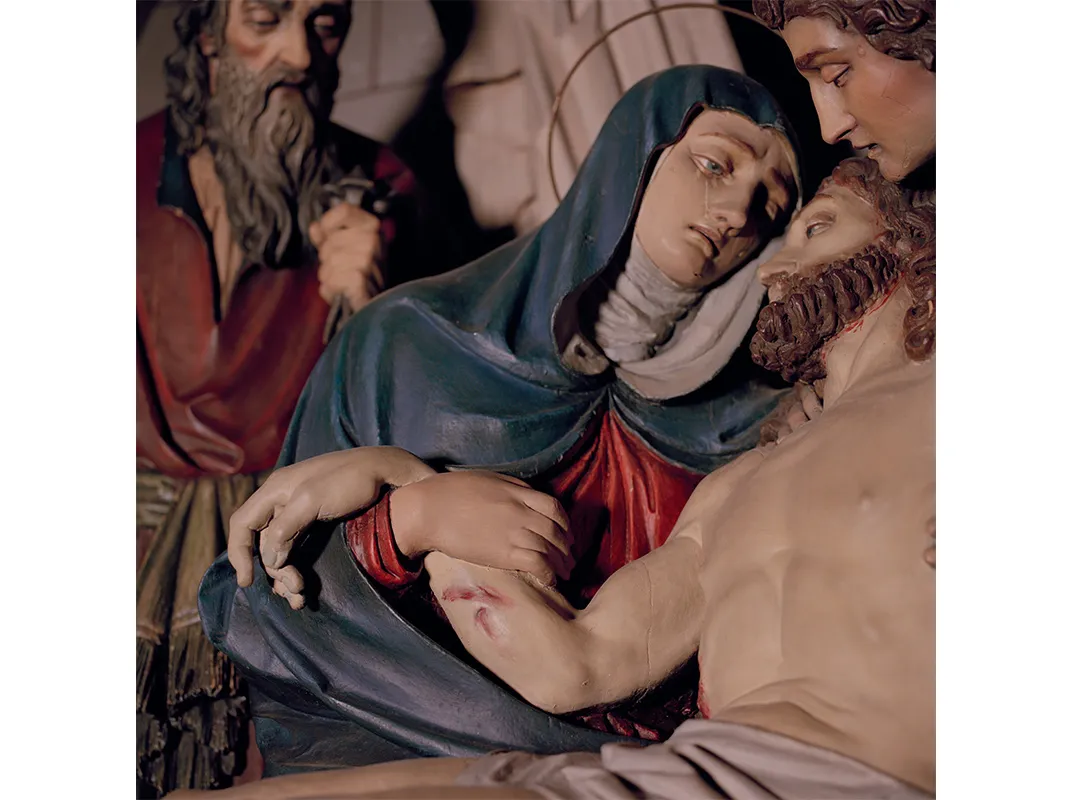A Pittsburgh Church Holds the Greatest Collection of Relics Outside of the Vatican
Behold the treasures of this tiny neighborhood church
On a hot morning in June 1891, more than 15,000 people crowded the grounds of a modest church in Pittsburgh. St. Anthony’s Chapel had been designed to serve about 50 families of mostly German origin, but pilgrims from all over the country descended to seek the aid of the church’s famous “priest-physician,” the Rev. Suitbert Godfrey Mollinger. They suffered from rheumatism, fever, paralysis, epilepsy and blindness, and came by carriage, in wagons, and on crutches, stretchers and mattresses. Father Mollinger had been rumored to possess the healing powers of the “wonder-worker” St. Anthony, whose annual feast day fell on June 13. One year at that time, a streetcar—which locals nicknamed “the ambulance”—was so overloaded on its way up the hill that it slid backward and nearly toppled.
The deeply revered priest was a tall man with a long Old World beard and a biretta cap perched on his head. The Pittsburg Dispatch described him as “a giant physically and mentally,” both “strong-willed” and “tender as a flower.” His reputation arose partly from what current chapel chairperson Carole Brueckner calls his “unusual hobby”: He collected relics of Catholic saints. By the time he died in 1892, he had amassed more than 5,000 relics, the world’s largest collection outside of the Vatican.
Today, St. Anthony’s Chapel stands on a quiet street in Pittsburgh’s Troy Hill neighborhood. It’s an unassuming two-steepled church—not the kind of place you’d expect to find wood pieces from the Last Supper table or a golden sarcophagus with the full skeleton of St. Demetrius. The building is laid out in a classic cruciform shape, a painted Romanesque arch at its center and a crystal chandelier above the pews. The altar of St. Anthony, featuring a backlit statue of its 13th-century namesake, sits beside the arch, and gleaming glass cases of golden reliquaries line the walls up to the altar. Mollinger’s chapel is purportedly home to 22 splinters of the True Cross (on which Jesus was crucified), a scrap from the Virgin Mary’s veil, and bones from all 12 of Jesus’s apostles. His most prized relic was a molar from St. Anthony—the only part of the saint kept outside of his hometown of Padua, Italy. After blessing the afflicted, Mollinger would often touch their injuries with a golden cross-shaped reliquary that stored remains from multiple saints.
It’s Catholic doctrine that relics contain some of the holiness of the saints they’re associated with, a veneration that dates back to the second century. Robin M. Jensen, a Notre Dame theology professor who has written extensively about relics, says they reflect a certain “materiality” built into Catholic doctrine: “Created matter and natural things are able to mediate the presence of the holy for us.”
The reasons behind Mollinger’s mission remain unclear. He was born to a wealthy family in Belgium in 1828, and his father died when he was 8 years old. When he was a young man, his mother sent him on the customary grand tour of Europe during which aristocrats were encouraged to choose their professions before attending university. Mollinger chose medicine, and became a practicing physician. In 1852, he began training for the priesthood. Two years later, at 26, he lost his mother. His parents’ deaths left young Mollinger with a vast inheritance. Brueckner speculates that “he was such a determined person that he was going to achieve something” with it.
In 1854, a bishop recruited him for mission work in America. Europe was in chaos: Nation-states were forming, and Italy’s Giuseppe Garibaldi and German Chancellor Otto von Bismarck were leading anti-Catholic campaigns. Relics were being confiscated, desecrated and even destroyed. Many wound up on the open market, sold on street corners or hocked in pawnshops. It was the religious equivalent of a fire sale.
As word got around that a priest in Pittsburgh wanted to rescue relics, European Catholics sought out the agents he’d hired, thinking it better to send the artifacts to safety in America than to risk their destruction in Europe. Mollinger insisted that all relics come to him with papers of authenticity, certified by a bishop and two witnesses. By 1880, the relic collection at St. Anthony’s had grown so large that it necessitated a new chapel. Mollinger paid for it.
For the Germans of Troy Hill, these European relics had special meaning. “There’s a way in which it was kind of a symbolic reunion, especially for immigrants coming to a new country,” notes Jensen. “Bringing these objects from their ancient past into their reality here and now was a way of closing time and space.”
But Mollinger himself was St. Anthony Chapel’s biggest draw. He gave blessings—and also wrote prescriptions, hiring a druggist to fill them. Some observers “ascribed the healing powers of Father Mollinger entirely to a power above and superior to him,” the Pittsburg Dispatch reported, while “others thought that the medicines which the priest prescribed played a part in the cures.” Not all his patients were Catholics, the paper noted: “Protestants based their confidence in the Father upon his acknowledged medical learning and skill.”
To the chapel’s namesake, physical and spiritual ministrations had also seemed complementary. Addressing the packed churchyard in June 1891, the Rev. John Toohill Murphy, the president of Pittsburgh Catholic College, proclaimed that St. Anthony had been able to simultaneously “restore the spiritual life which had been lost, and give back the bodily health which had decayed.” Mollinger, he noted, did his healing through St. Anthony’s “miraculous intervention.”
After Mollinger died in 1892, the crowds stopped coming. In the 1970s, when Pittsburgh was struggling through a recession, the chapel fell into such disrepair that the diocese considered closing it. But there’s been a resurgence in pilgrimages among American Catholics, as Jensen points out, and St. Anthony’s Chapel attracts a small but steady stream of visitors. There’s no congregation and no healing priest, but about 15 to 20 people from nearby and out of town come each day to tour the chapel or pray privately. On Tuesdays, they recite the novena to St. Anthony.
Some visitors come purely out of historical interest, viewing the relics as exhibits in a museum. Brueckner says tourists often remark on the otherworldly atmosphere. “Many people have told me they feel a presence when they’re there,” she said. “It’s quite gratifying, you know? There is a presence that reaches within to us.”























